Today I am thrilled to share a beautiful new book and a really lovely interview with you—I’ve been waiting for months to publish it, and am so excited that the day is finally here!
Ariella Chezar is the godmother of seasonal floral design and has led the way for countless designers and farmer-florists to look to nature for inspiration and take their cues from the natural world. Her impact on the industry over the last 30 years is immeasurable. She was one of the first people to use local, seasonal material throughout their work and inspired an entire generation of designers along the way.
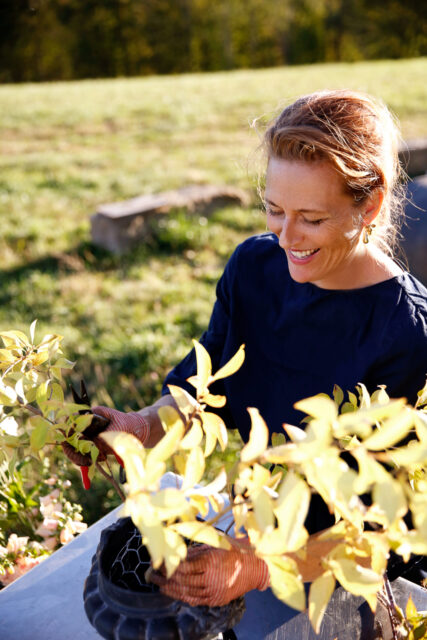 I’ve had the privilege of knowing Ariella since the beginning of my career and she has had such a significant impact on my flower journey. I remember the first time I wrote to her, I was just getting my start as a writer and wanted to interview her for a tiny little farming publication with an even smaller readership base.
I’ve had the privilege of knowing Ariella since the beginning of my career and she has had such a significant impact on my flower journey. I remember the first time I wrote to her, I was just getting my start as a writer and wanted to interview her for a tiny little farming publication with an even smaller readership base.
My editor warned me to not get my hopes up since Ariella was essentially famous and I was essentially a nobody. But by some miracle, she responded to my overly enthusiastic email and agreed to the interview which was my first big break.
Over the years I have learned so much from Ariella both about flowers and about the power of sharing. Her generosity altered the course of my life and I have tried to pay it forward in every way that I can.
Ariella has written four beautiful books now, and if I had to choose a favorite, it would be her newest, Home in Bloom, which comes out today. It’s hard to even begin to describe how magnificent this book is, you really have to experience it for yourself.
In it, we see Ariella in her element—transforming the most beautiful spaces into what she calls “floral fantasies,” embracing the best of what nature has to offer, including wilder elements such as weeds and brambles, combined with showstopping blooms. This book will change the way you think about flowers and offers an entirely new palette of possibilities to draw inspiration from.
It’s a pleasure to share this special interview with you, so without further ado, let’s dive in.
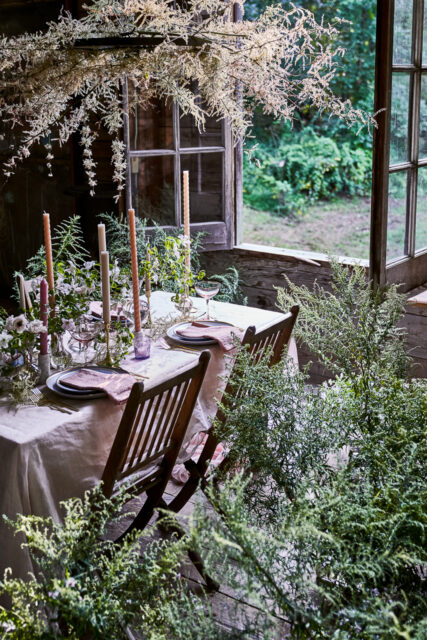 I’m so curious to know what inspired you to write Home in Bloom and why now?
I’m so curious to know what inspired you to write Home in Bloom and why now?
One of my most favorite things is being invited to design flowers in someone’s house. To see what they love, what they’ve surrounded themselves with, and to make arrangements that reflect all of this. It feels very personal and as such, very special.
I wanted the opportunity to interpret the feeling in a home with my flowers. Unlike a studio where props and environment are pulled in, designing in a home is much more creatively exciting.
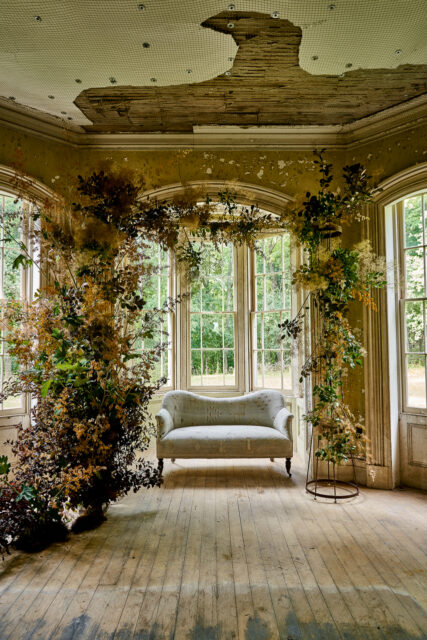 What was the process like for creating the arrangements and installations that grace the pages of your beautiful book? Would you take us on a day in the life of one of your big shoots, from gathering the flowers to creating the arrangements to styling, lighting, and making the photographs? Oh to be a fly on the wall!
What was the process like for creating the arrangements and installations that grace the pages of your beautiful book? Would you take us on a day in the life of one of your big shoots, from gathering the flowers to creating the arrangements to styling, lighting, and making the photographs? Oh to be a fly on the wall!
It was a little bit different each time, but for the most part, once a location was chosen I would go about assembling a diverse selection of flowers with a vague overall sense of what was going to go where. Working with Gemma and Andy Ingalls in the beginning and then Andrea Gentl and Marty Hyers thereafter was a joyful fast-paced dance.
I am less of a planner, in fact, this proved frustrating for the photographers because I struggled to generate concise shot lists prior, not knowing which flowers I would have exactly nor what I wanted to shoot per se. The beauty of this book was that I was given permission to feel my way into each setup and each shot, to respond to a particular corner of a room or a surface and then the photographers just rolled with it. I loved this process very much.
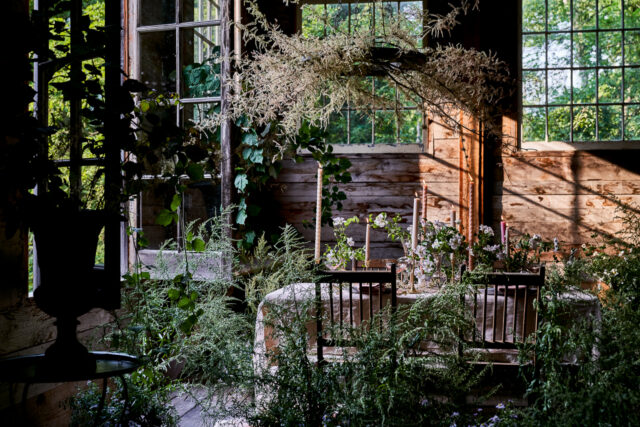 (Photo above copyright © 2024 by Ingalls Photography.)
(Photo above copyright © 2024 by Ingalls Photography.)
Creating a book is such a huge endeavor—so many details to coordinate and so many variables to maneuver, all while working against a strict set of deadlines. I’m amazed by how much traveling must have been involved in shooting Home in Bloom. Where did you go and what was that experience like?
Unlike my other books, this one was primarily focused closer to home with the exception of the house in Merida, Mexico with a few of the houses being literally right around the corner. It was really a joy to be able to incorporate the natural elements that I drive and walk by every day.
I think it may be my favorite book thus far because I was allowed so much artistic freedom by my wonderful team at Ten Speed. As a creative, that kind of freedom inevitably allows for the best results.
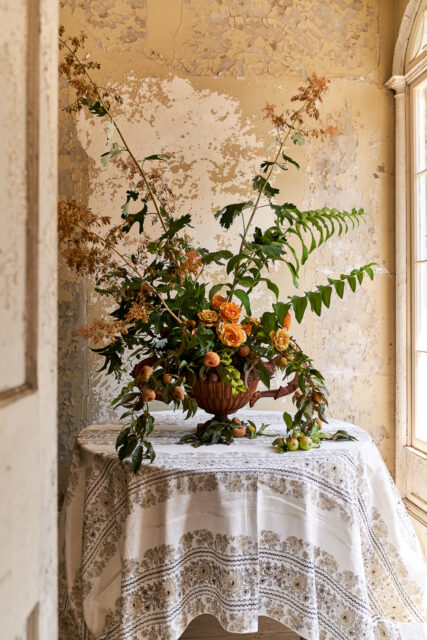 This book provides a window into the most beautiful, elegant homes and spaces. The architecture and colors of the interiors paired with your exquisite flowers are almost too much to handle! Can you tell me a little about these special spaces and how you chose them?
This book provides a window into the most beautiful, elegant homes and spaces. The architecture and colors of the interiors paired with your exquisite flowers are almost too much to handle! Can you tell me a little about these special spaces and how you chose them?
Many of these spaces belong to close friends and because of this, I felt at ease and familiar in the way one does. The others, like Andrea and Marty’s incredible dream of a loft, the locations in Merida, and the abandoned Hudson, New York mansion were so rich on so many levels that it was so easy to dream my way into them and become deeply inspired.
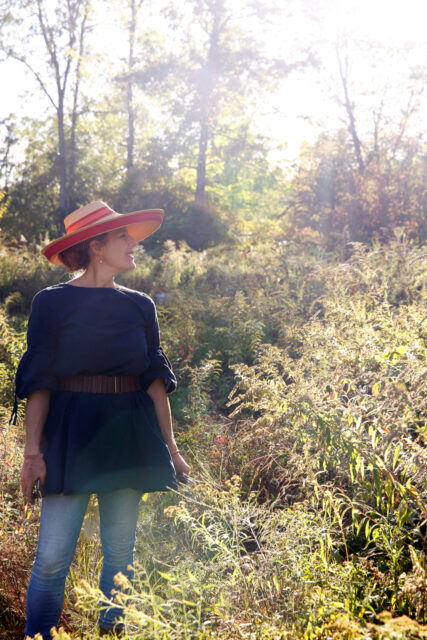 You have a very deep and powerful relationship with nature. How has it influenced your personal approach to floral design?
You have a very deep and powerful relationship with nature. How has it influenced your personal approach to floral design?
It is the single most important driver, this connection, because it is the natural world that binds me to all the things that I adore and treasure. Trees, flowers, grasses, weeds, the animals that live amongst them—they are my constant inspiration, my love.
Their fragility and the precarious place that humanity has put them is a source of deep worry and fear, daily. In reminding people of this fragility my forever hope is that they will wake up—though I’m not especially optimistic. It frustrates and puzzles me that designers choose dyed and sprayed flowers when there is so much natural beauty to be found. Not to mention the stubborn pervasiveness of floral foam.
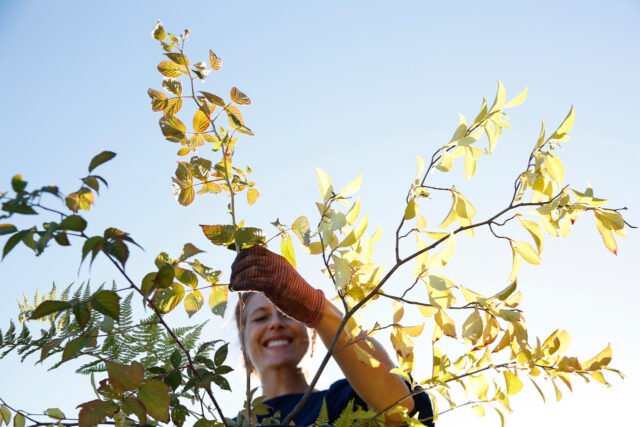 In your new book, you explore a much wilder side of nature than I have seen you do before. You say, “With each chapter, I stray just a little bit further into the meadow…” There’s something so magical about how you embrace weeds and brambles and elevate them in such an unexpected way. Can you talk a little about how your relationship with the “rough and tumble,” as you put it, has evolved over the years?
In your new book, you explore a much wilder side of nature than I have seen you do before. You say, “With each chapter, I stray just a little bit further into the meadow…” There’s something so magical about how you embrace weeds and brambles and elevate them in such an unexpected way. Can you talk a little about how your relationship with the “rough and tumble,” as you put it, has evolved over the years?
I have always felt connected to the humble elements, the quieter flowers, the weeds. As much as I have a near rabid appetite for sumptuous over-the-top blooms I adore the contrast of humble with lusciousness, delicate with showstopping. It is this contrast that for me creates interest and some tension.
Anyone can put two dozen garden roses together and make a statement that way, and there is NOTHING wrong with that, but I’ve always found it more interesting when those two dozen garden roses are tangled with a clematis vine or interspersed with a less-than-perfect cluster of weeds. It’s not unlike a room.
The ones that pull me in are the ones that contrast incredible pieces with quieter, simpler ones. I like when things are just a little off—and not quite so perfect. It allows for much more space to dream.
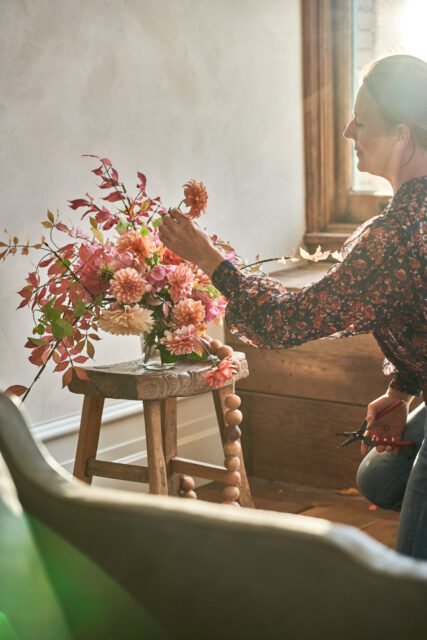 One of the things that has always struck me about your work is that it has such a strong sense of place. Your arrangements always look as if they are extensions of their surroundings and it’s hard to tell where they leave off and the rest of the space begins. When creating a bouquet or a floral installation, what are the important things to consider if one wants it to belong to its surroundings?
One of the things that has always struck me about your work is that it has such a strong sense of place. Your arrangements always look as if they are extensions of their surroundings and it’s hard to tell where they leave off and the rest of the space begins. When creating a bouquet or a floral installation, what are the important things to consider if one wants it to belong to its surroundings?
Season and place. Place and season. These are the two most important things. Pay attention to what’s happening outside the window, to what’s growing along the side of the road, to what’s available that week at the farmers market. It’s really just about paying attention and then finding those elements that are the stars of that particular moment.
This can be a bit of an abstract goal if you live in a city, but because I live in the sticks I am always acutely aware of what is happening around me at any given time. The same goes for when I’m traveling. I notice what’s growing along the side of the highway, along the train tracks. In fact, I am ALWAYS taking in what’s happening on the side of the road.
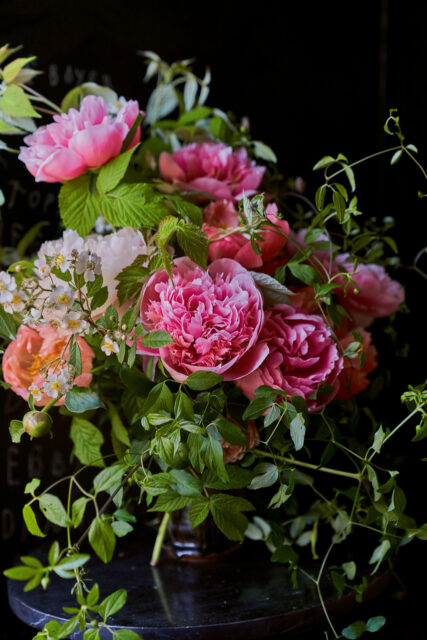 Color can be one of the most challenging aspects of floral design to master and so many of us struggle to have our arrangements look the way we want them to. Can you share any advice on working with color and how you personally approach it?
Color can be one of the most challenging aspects of floral design to master and so many of us struggle to have our arrangements look the way we want them to. Can you share any advice on working with color and how you personally approach it?
“Color is my daylong obsession, joy, and torment,” said Claude Monet, and I feel just the same. The first thing I want to know when a client approaches me for a job is the palette, and if it’s green and white I deflate just a little. I really, really love combining colors, playing with improbable combinations, experimenting. When people talk about staying “on brand” with a particular palette that they do over and over again I just can’t relate—I think I might die of boredom.
While I am drawn pretty reliably to oranges, apricots, and all the greens, I am equally riveted by all the yellows, blues, and reds and the muddy in-between tones. I find purples to be a little tricky and I have always joked that I’d rather eat glass than wear black. I do like white at times, and the drama when it contrasts with black, but there always has to be color somewhere.
Combining colors has always been intuitive for me. I credit my painter mother with this, and I’m sure my Waldorf School upbringing gets a bunch of the credit too. As far as the struggle that some feel when approaching color I think the main mistake people make is putting too many different colors with too many different values together, and this always ends up looking like an argument, not a beautiful melody. The easiest way to combine colors is to layer them and to work tonally, something you do so beautifully.
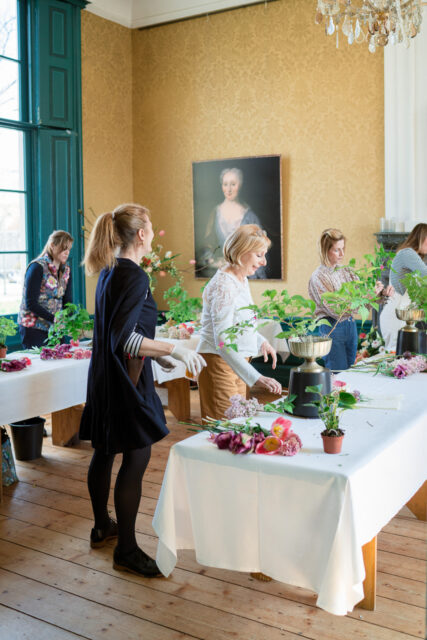 You have had such an incredible career, lived and worked on both coasts, traveled the world, taught in the most exotic places, and decorated hundreds if not thousands of weddings and events over the past 30 years. Looking back, is there a favorite chapter or experience that has left its mark on you?
You have had such an incredible career, lived and worked on both coasts, traveled the world, taught in the most exotic places, and decorated hundreds if not thousands of weddings and events over the past 30 years. Looking back, is there a favorite chapter or experience that has left its mark on you?
My greatest joy on this journey has been connecting with flower lovers from all over the world— and sharing that common thread, that beauty. Most of the time, this connection stretches into a deep love and respect for nature, and so many of these connections around our shared passion have developed into lifelong friendships.
I really love teaching. I love connecting people to that tender, often unfamiliar place of creativity—the way flowers make accessing that place so easy, but no less profound. Whenever I am allowed to be creative, I am happy. There are many, many experiences I feel deeply grateful for, but it is the connections that stand out above all else.
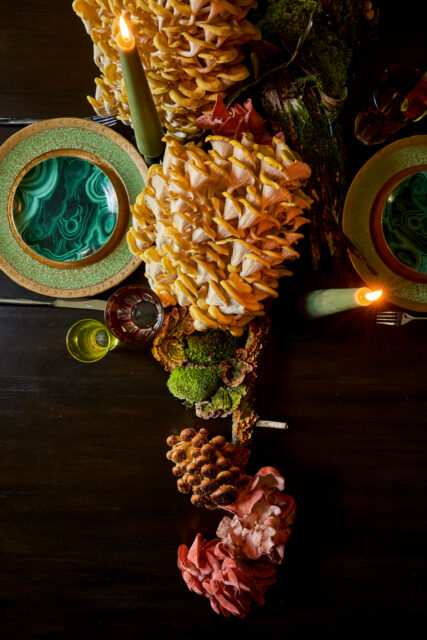 With each book that I’ve written, I’ve had an intention and hope for the reader. I’m curious to know if you feel the same way. What do you hope that readers will take away from this beautiful book? What is it that you want to linger with them after they’ve turned the last page?
With each book that I’ve written, I’ve had an intention and hope for the reader. I’m curious to know if you feel the same way. What do you hope that readers will take away from this beautiful book? What is it that you want to linger with them after they’ve turned the last page?
My hope is that they are stretched beyond the desire for cultivated flowers to the less spectacular and humbler specimens. Also, that they don’t hesitate to bring in what they find outside. To live with flowers as much as possible, and to marvel at their generous, ephemeral magic.
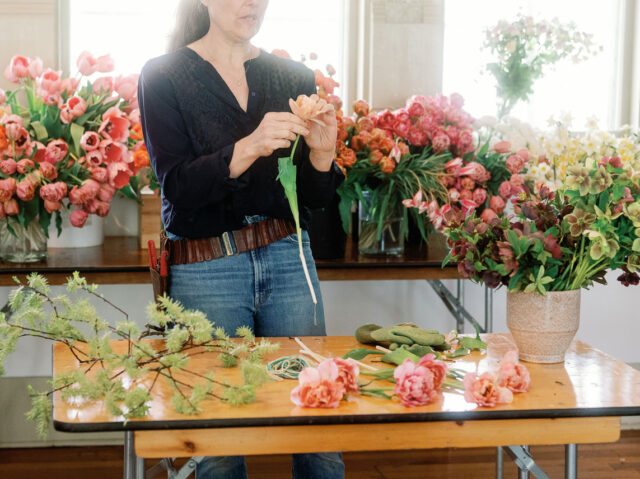 Now that this beautiful book is out in the world, what are your plans for the coming season? Will you be hosting any workshops or making any exciting journeys? I’d love to hear what you have planned next.
Now that this beautiful book is out in the world, what are your plans for the coming season? Will you be hosting any workshops or making any exciting journeys? I’d love to hear what you have planned next.
I have a bunch of book-related events beginning to fill my calendar, some of them lectures and demonstrations, but most of them classes and small workshops, including:
March 21: Book signing at Beacon Hill Bookstore with Grace Lam of Five Forks Farm, Boston, MA (sold out)
April 6: Book signing at Behida Dolić Millinery, Hudson, NY
April 16–18: Spring Workshop with Max Gill, Oakland, CA
May 2–3: Spring Flower Workshop, Hudson, NY (sold out)
May 21: Floral Masterclass at The Garden Museum with Lucy Hunter and Shane Connolly, London, England
June 1: One-day floral class at Wildflower Farms, Gardiner, NY
June 10–12: Peony workshop with Nicolette Camille at Renaissance Farm, Brandon, VT
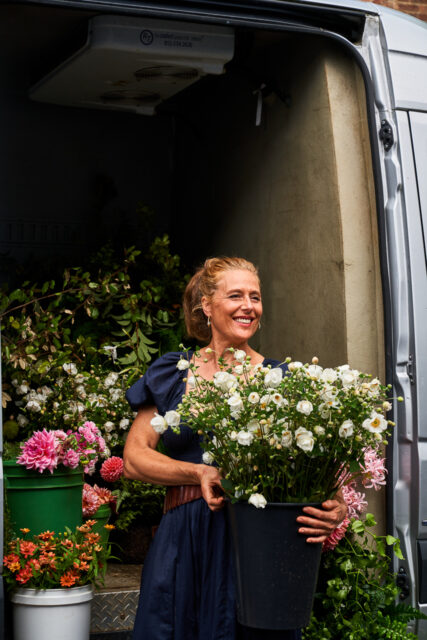 Ariella, thank you so much for taking the time to share about your incredible book—it’s a gift to the world.
Ariella, thank you so much for taking the time to share about your incredible book—it’s a gift to the world.
Thank you for this opportunity to connect with you and your readers, thank you so much.
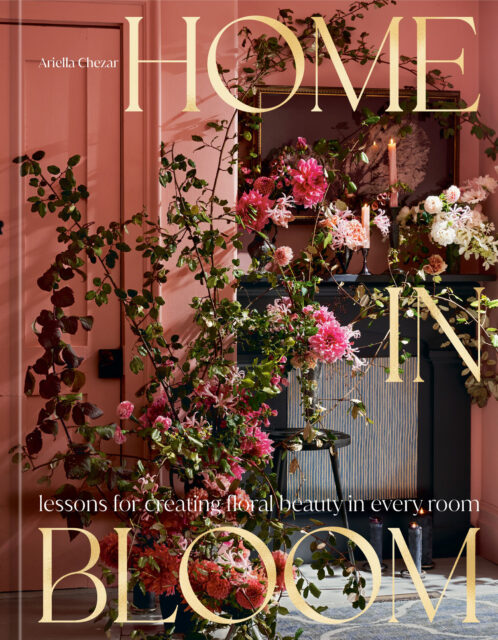 To celebrate the release of Ariella’s new book, Home in Bloom, we’re giving away five copies. For a chance to win, please share one of your favorite unexpected or wilder bouquet ingredients. If you don’t have one, tell us what about this interview inspired you the most. Winners will be announced on March 12. Please note: This giveaway is open to U.S. and Canadian residents only.
To celebrate the release of Ariella’s new book, Home in Bloom, we’re giving away five copies. For a chance to win, please share one of your favorite unexpected or wilder bouquet ingredients. If you don’t have one, tell us what about this interview inspired you the most. Winners will be announced on March 12. Please note: This giveaway is open to U.S. and Canadian residents only.
UPDATE: A huge congratulations to our winners Jess, Hillary, Erin, Cynthia and Margaret.
To learn more and connect with Ariella, be sure to visit her website and sign up for her newsletter. You can also follow her on Instagram. Home In Bloom is available from Amazon, Bookshop, Barnes & Noble, and your favorite local bookstore.
Please note: If your comment doesn’t show up right away, sit tight; we have a spam filter that requires us to approve comments before they are published.
Floret only lists companies and products that we love, use, and recommend. All opinions expressed here are our own and Floret does not offer sponsored content or accept money for editorial reviews. If you buy something using the retail links in this post, Floret may receive a small commission. Thank you for your support!
Except as noted, all photos copyright © 2024 by Gentl & Hyers. Reprinted with permission of Ten Speed Press, a division of Penguin Random House.

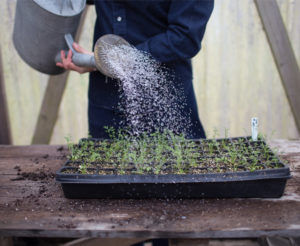
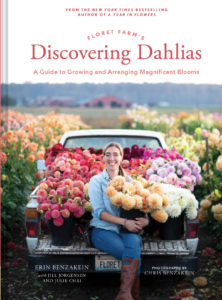
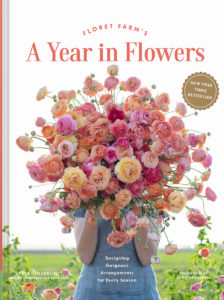
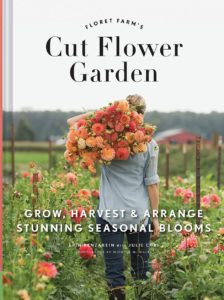

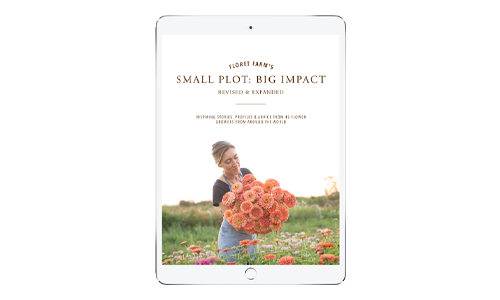
Sue Rosenfield on
I love using fruiting grape vine in arrangements. My sister has this huge tangled vine of champagne grapes that are delicious but so small they are almost all seed to eat them. They are so tiny and delicate I love using them in an arrangement and am always nibbling at them when they’re on the table.